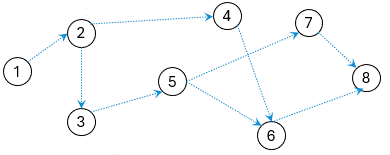Extending Project Management capabilities beyond Gantt Chart and Critical Path into the realm of Machine Learning
An actual Customer Success story

For most of us, Project Management means, Activities & Tasks monitoring in form of Gannt Chart with additional analytics such as Critical Path and PERT chart. Organizations around the world have been using these techniques extensively and benefited immensely. Yet these are decades old techniques and have been adopted by almost all major project management companies around the world. When today’s world is full of AI and GenAI, how come these next generation technologies can be extended to better manage project managements activities that have grown both in volume and complexity.

Moving on, imagine an organization that executes multiple projects of similar types. Examples could be Big Real estate firms, or turnkey players etc. If you look closely, most of the projects executed by these companies are fairly similar in nature. Even project activities are similar and carried out multiple times repeatedly over multiple projects.
In the light of the above argument, how these organizations can use the insights of past projects over future projects. Even today’s costliest project management tools available in the market fail short to provide this capability. Remember Data is the new oil. But if left unrefined, it is of no use. Let me give you a live example of this. We worked with a construction company based out of India. One of the biggest financial draining factors for them was project delays & cost overruns. The company had some great learnings from their past experiences, yet they were unable to fully utilize them (learnings) to better manage ongoing and future projects.
Using AI/ML we trained models on their historical projects data. Some of the included data points used were project details (and attributes), customer details, supervisors, and team owners (of respective projects), contractors, and activity details including time delays (and reasons), Cost overruns (and reasons) and Customer scores for each milestone.
Each project (and each activity) has three (3) KPIs that are followed religiously. These are,
-
Time Variance,
-
Budget Variance, and
-
Customer score
Also, each KPI was weighted differently based on project types. For small projects (highest volume of projects), cost overrun is the most important KPI, while customer score was most important for big ticket projects (marquee projects).

Through regression analysis, it was clear that Time variance has a direct correlation with Cost variance and Customer Score. The regression model(s) explained the variability of 60% and 65% for Budget variance and Customer score respectively vis-à-vis Time variance respectively. Therefore, Time variance was picked up as Target variable (dependent Variable).
For ML based classification, labels of target variables had to be defined clearly. Through Data analysis and customer workshops, target variable (time variance) was divided into 3 buckets as
-
Greater than 0% (no Delays) : Bucket-1
-
0 to -10% (upto 10% time overrun) : Bucket-2
-
-10% or more (more than 10% time overrun) : Bucket-3
In Machine learning parlance, this is called multiclass classification. We are not covering math’s behind multiclass classification algorithms used in the actual project.
A portion of the decision tree (result of ML algorithm is given as a reference below). As one can see, with simple if and else questions as presented in the decision tree, the construction company’s project management team now can predict the likelihood of each project delay and take corrective actions. Highlighted branch of the decision tree is to be understood as if ,
-
Project size ≤ 2500 sqft, and
-
Contract rate ≤ Rs. 2900 / sqft, and
-
Project has a basement, then
-
100% of these projects run into time delays
These insights have been instrumental as the company can now know with a high degree of certainty the project attributes that drive the time overruns. As the construction company has no control on these attributes, they only helped in filtering the projects that need close (extra) monitoring.
At the time of publishing this article, we are working with the company to extend the scope to identify contributing time delay factors of each activity (of a project). As these activities are controlled and executed by the construction company, they have full control on these contributing factors as well.